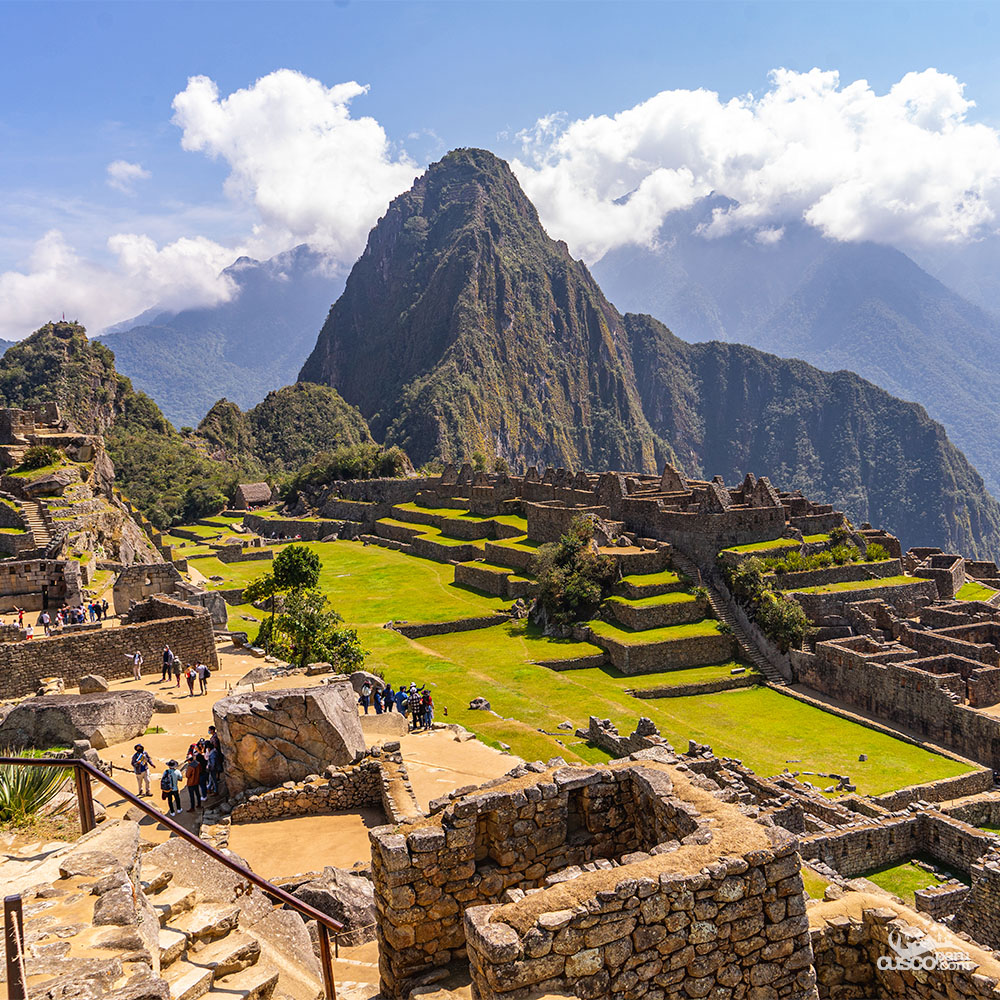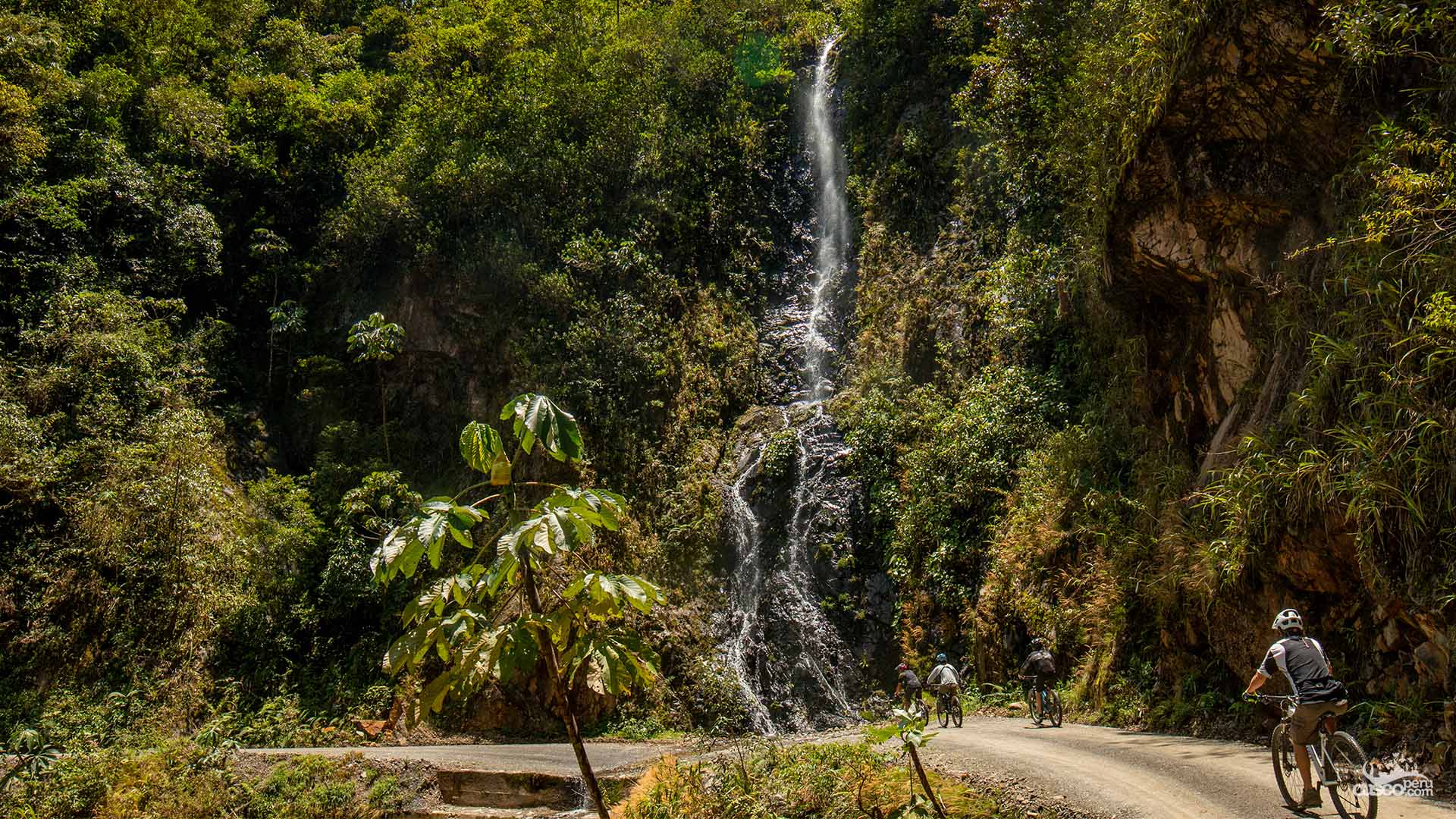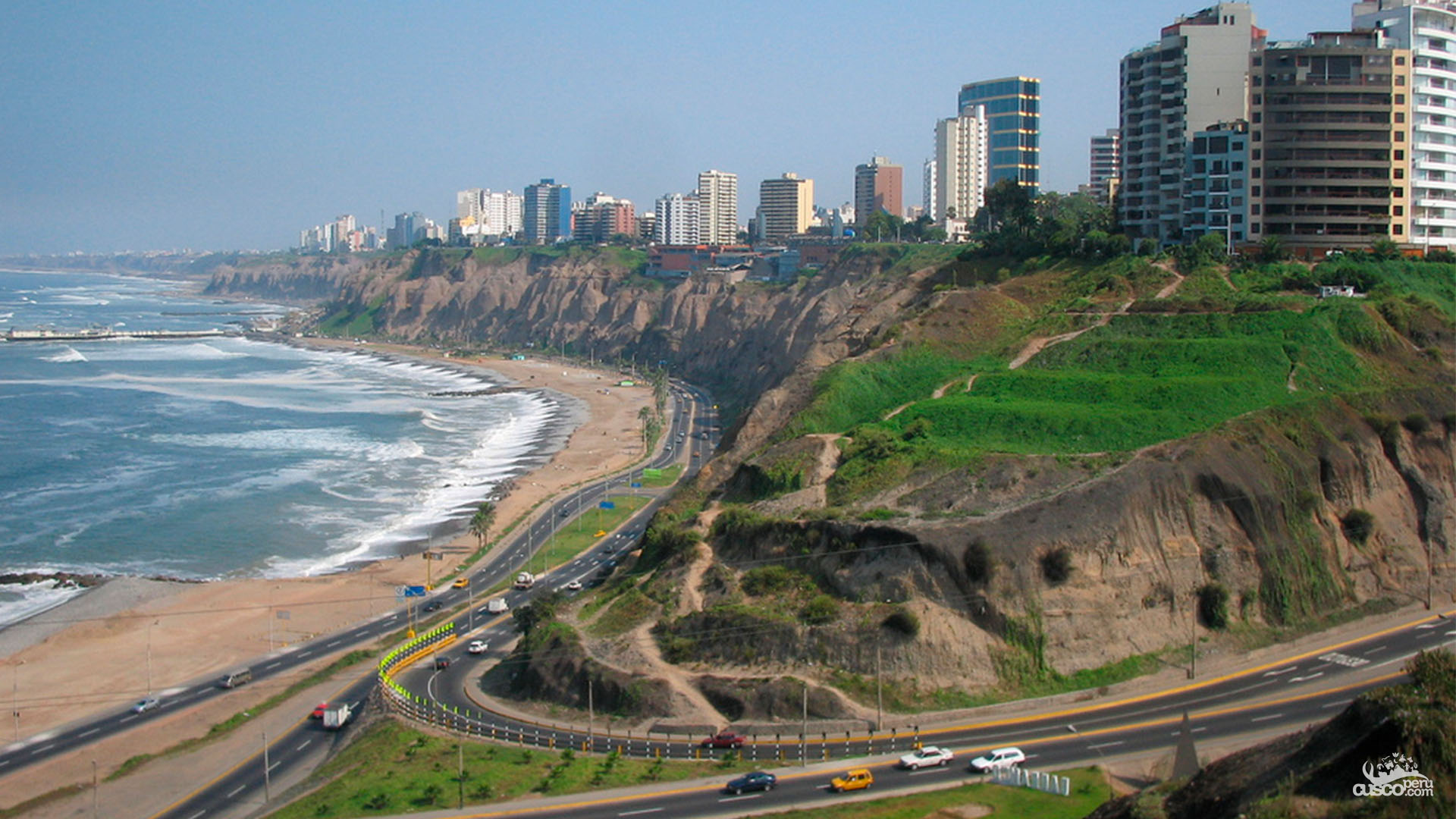

The Peruvian highlands experience two well-defined climatic seasons: the dry season, from April to October, characterized by sunny days, very cold nights, and no rain, being the ideal time to visit; and the rainy season, from November to March, with abundant precipitation (generally over 1,000 mm).
Some general characteristics of the Andean climates include atmospheric dryness, reduced sunlight in summer, and marked temperature differences between sun and shade, night and day, and morning and afternoon.
The Peruvian highlands, a fascinating mountainous region, are made up of departments that offer unique experiences to tourists.
In the north: Cajamarca, with its cool climate and pre-Columbian history, invites you to discover its hot springs and delicious cuisine. Áncash, surrounded by impressive snowy peaks, offers a cool climate and unforgettable adventures in the Cordillera Blanca. La Libertad has a climate that varies from warm on the coast to cool in the mountains.
In the center: Huánuco, with its temperate climate, invites you to discover the Tingo María National Park and the enigmatic Lake Paca. Pasco, with its cold climate, is home to the majestic Cerro de Pasco. Junín, with its cool and rainy climate, hosts the Junín Forest Biosphere Reserve. Huancavelica, with its cold mountain climate, captivates with its colonial history and highland landscapes.
In the south: Ayacucho, with its temperate climate and rich artisanal tradition, dazzles with its colonial churches and religious fervor. Apurímac, with its temperate climate, offers adventures in the Apurímac Canyon. Cusco, known for its temperate climate and impressive archaeological sites, is a must-visit destination. Puno, on the other hand, surprises with its cold climate and the mysterious Lake Titicaca. Arequipa, with its sunny and dry climate, captivates with its colonial architecture and the impressive Colca Canyon.
These destinations, each with their diverse climates and attractions, promise an unforgettable experience in the Peruvian highlands.


At this altitude level, the temperate climate offers ideal conditions for agriculture and a rich biodiversity of flora and fauna.
This level is located on both the western and eastern slopes, at the upper limits of the punas. Here, temperatures drop, giving way to cloud forests and species adapted to the cold, while transitioning to the puna.
The climate is cold, with high atmospheric dryness and thermal variations. The cold climate prevails at this level, with sparse vegetation and the presence of the puna, characterized by grasslands and plants adapted to extreme conditions.
At night, temperatures drop to 0°C, causing freezing in wetlands and streams, which thaw in the morning.
Its temperatures can be compared to those characterizing the peripheral polar zones. While ice and snow persist, the area receives sunlight all year round.
At the highest altitudes, the extremely cold climate limits plant and animal life, but offers imposing landscapes and the opportunity to experience life at high altitudes.
The altitude levels of the Peruvian highlands offer a unique climatic diversity that enriches the experience of tourists visiting this impressive region. From tropical valleys to snowy mountains, each level reveals a different facet of Peru's natural beauty.


In the Peruvian highlands, the seasons of the year are characterized by two main seasons: the rainy season and the dry season. These seasons are closely linked to the climatic changes that the region experiences throughout the year and are of great importance for tourists planning to visit the country.
The rainy season generally occurs during the summer and early autumn months, from December to March. During this period, precipitation is abundant and can cause heavy and prolonged rains in the Peruvian highlands.
These rains are vital to maintaining the region's vegetation and biodiverse ecosystems but can also lead to landslides and river flooding, affecting access to some areas and tourist activities.
The dry season takes place during the autumn and winter months, from April to November. During this time, rainfall decreases significantly, and the region experiences a drier and more stable climate.
Days are usually sunny, and temperatures are cooler, creating optimal conditions to explore the Peruvian highlands and engage in outdoor activities like trekking, climbing, and cultural tourism.
It is important to note that the rainy and dry seasons in the Peruvian highlands can vary slightly depending on the geographical location and altitude.
For tourists visiting the Peruvian highlands, it is essential to consider these seasons when planning their trip. During the rainy season, it is crucial to be prepared for possible changes in the itinerary due to weather conditions, while the dry season offers an excellent opportunity to enjoy all the natural and cultural wonders that this region has to offer.


Here you can learn about the different climatic conditions of tourist cities like Cusco, Arequipa, Puno, Cajamarca, Huaraz, and Ayacucho, ranging from subtropical to high mountain cold climates.
Cusco, located in the Peruvian Andes, enjoys a temperate-cold climate all year round, with average temperatures ranging between 10°C and 20°C. During the day, temperatures are usually warm, while at night, they drop. Rain is more frequent between November and March. Learn more about Cusco.
Arequipa, known as the White City, has an arid and dry climate. Daytime temperatures usually range between 20°C and 25°C but can reach up to 30°C in summer. Nights are cool, with temperatures around 10°C. Rain is infrequent, mainly concentrated between January and March. Learn more about Arequipa.
Puno, located on the shores of Lake Titicaca, has a cold and dry climate due to its high altitude. Daytime temperatures vary between 10°C and 20°C, while nights are much colder, with temperatures below 5°C. Rain is more common between December and March, with a drier climate during the rest of the year. Learn more about Puno.
Cajamarca has a subtropical mountain climate. Daytime temperatures usually range between 15°C and 20°C, with cooler nights around 10°C. Rain is more intense between November and March, with January and February being the rainiest months.
Huaraz, in the Cordillera Blanca, has a cool mountain climate. During the day, temperatures range between 15°C and 20°C but can drop below 5°C at night. Rain is more frequent between December and March, with a drier climate the rest of the year.
Ayacucho has a temperate and dry climate. Daytime temperatures usually range between 20°C and 25°C, with cool nights around 10°C. Rain is infrequent, mainly concentrated between January and March.


Discover the natural and cultural wealth of the Cusco highlands, from its mountain ranges and snowy peaks to its archaeological heritage and the incredible Andean culture that the region harbors.
The Peruvian highlands host an impressive variety of archaeological sites that offer a window into the fascinating past of this region. From ancient Inca cities to pre-Inca archaeological sites, these places are must-visit destinations for those looking to explore the country's historical and cultural richness.
These are just some of the fascinating archaeological sites found in the Peruvian highlands. Each offers a unique experience for tourists, combining history, culture, and natural beauty in an impressive setting.
The Peruvian highlands are home to some of the most impressive mountain ranges in the world, offering spectacular landscapes and unforgettable experiences for adventurous tourists.


The Peruvian highlands are home to majestic snowy mountains that captivate visitors with their imposing beauty and dreamy landscapes.
The Peruvian highlands are home to some of the most impressive volcanoes in the country, offering spectacular landscapes and unique experiences for adventurous visitors.


Here are some useful tips for your visit to the Peruvian highlands:


The vast Peruvian Amazon, traversed by the mighty Amazon River, can be divided into two distinct zones: the High Jungle (montane jungle), located above 700 meters above sea level, and the Low Jungle, below 700 meters.
The climate throughout the Peruvian jungle is hot and humid, remaining relatively constant year-round.
The Peruvian jungle is made up of five departments: Loreto, Amazonas, San Martin, Ucayali, and Madre de Dios, each with its own distinctive climate.
In the north: Loreto, the largest department, has a tropical climate and lush vegetation. Amazonas, located near the border with Ecuador, enjoys a warm and rainy climate that nourishes its dense forests. San Martin has a warm climate that makes it a must-visit destination.
In the center: Ucayali has a warm and very rainy climate, perfect for exploring its many waterfalls.
In the south: Madre de Dios is famous for its warm sunsets, often accompanied by light rain.
In the Peruvian jungle, the seasons are not very pronounced; however, they can be identified by the amount of rainfall.
In addition, there are 2 intermediate seasons:
It is important to note that, throughout the year, the climate in the Peruvian jungle is generally stable and favorable for tourism, although heavy rains are always a possibility.
The Peruvian jungle is divided into two main areas, each with its own temperature ranges.
The High Jungle: Average highs reach up to 26°C, with lows around 12°C. Humidity levels range between 80% and 90%. From May to August, temperatures can drop further, reaching as low as 8–12°C.
Low Jungle: Average temperatures can rise to 31°C and drop to 15°C, with humidity levels of up to 75%.
Overall, humidity in the jungle remains very high throughout the year.
The Peruvian Amazon receives its heaviest rainfall between November and April, a period when 80% of the annual precipitation occurs. The Low Jungle records over 1,000 mm of rain per year, while the High Jungle receives between 2,600 and 4,000 mm annually, with some areas surpassing 8,000 mm.
Between April and October, rainfall is less frequent, rivers lower their levels, and roads are easier to travel. During the rainy season, however (November to March), daily downpours are common and can often damage or block access roads.


When visiting the Peruvian jungle, it is essential to bring the right clothing and accessories to adapt to the varied climate. Here are some recommendations:


The Peruvian coast ranges from mild temperatures and clear skies to refreshing winds and rare rains. It is the presence of the Andes to the east, along with the cold Humboldt current reaching its beaches, that gives the area its characteristic arid and dry nature.
The Peruvian coast is composed of several departments, each with its own charm and characteristic climate. There are 11 departments that make up the coast of Peru: Tumbes, Piura, Lambayeque, La Libertad, Áncash, Callao, Lima, Ica, Arequipa, Moquegua, and Tacna. These have a privileged view of the glorious Mar de Grau, the maritime territory of Peru.
In the north, we have: Tumbes captivates you with its tropical climate and white sand beaches. Piura, famous for its sunny days. Lambayeque immerses you in its pre-Columbian history and temperate climate. La Libertad surprises you with its sunny weather for most of the year.
In the center: Áncash, home to the majestic Cordillera Blanca and cool mountain climate. Callao, with a warm and humid climate. Lima, the bustling capital, offers a mild and foggy climate ideal for exploring its rich culture. Ica, known for its impressive sand dunes and arid climate.
The south is comprised of: Arequipa, the White City, welcomes you with its colonial architecture and temperate climate. Moquegua, with its fertile valleys and subtropical climate. Tacna, the heroic city, has a desert climate.
Each province of the Peruvian coast has its own charm and characteristic climate, waiting to be discovered by adventurous tourists. Additionally, it is important to note that each province may belong to more than one region, meaning a single province can have coast, highlands, and/or jungle within its territory.
On the coast of Peru, the seasons are quite mild, but each has features that make them identifiable.
However, there are 2 intermediate seasons:
It is important to note that, throughout the year, the climate on the Peruvian coast is generally stable and offers favorable conditions for tourism at any time.
On the coast of Peru, the temperature varies according to the region and the time of year. During the summer, temperatures can reach up to 30°C, while in winter, they can drop to around 15°C.
These variations offer a wide range of climatic experiences for tourists visiting the country. It is important to consider these differences when planning outdoor activities and selecting appropriate clothing to fully enjoy your trip.
On the coast of Peru, precipitation is scarce for most of the year. However, in some areas, such as Tumbes, there is a more marked rainy season. It is important to consider these patterns when planning your trip.
Although the Peruvian coast is generally dry, it is possible to encounter some rain, especially in certain regions and during specific periods of the year. It is advisable to carry a light umbrella or a raincoat in case of unexpected rain, especially if you plan to visit areas more prone to precipitation.
On the coast of Peru, winds play an important role in the climate. Southerly winds often bring cool and humid conditions, especially during the winter. These winds can affect outdoor activities and coastal navigation.
On the other hand, during the summer, the winds are usually milder, creating more pleasant conditions for enjoying the beaches and other outdoor activities, such as paragliding. It is important to consider this when planning your trip to the Peruvian coast, especially if you plan to participate in activities like surfing or sailing.


When visiting the coast of Peru, it is essential to bring appropriate clothing to adapt to the varied climate. Here are some suggestions:

Happy passengers